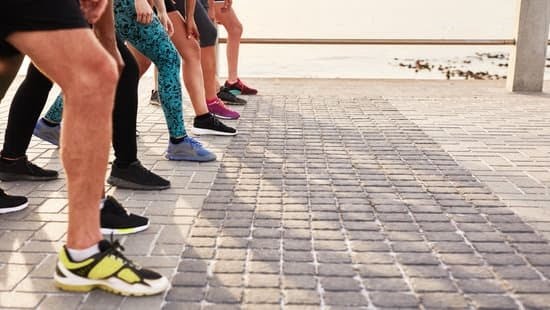Are you looking for a versatile and effective tool to enhance your back exercise routine? Look no further than the fitness ball.
In this article, we will explore the benefits of incorporating a fitness ball into your back workout, discuss proper form and technique for performing back exercises with a fitness ball, and provide you with a list of top back exercises to try. Whether you are new to using a fitness ball or are looking for ways to spice up your existing back exercise routine, this guide has got you covered.
Using a fitness ball for back exercises can offer numerous benefits, including improved core strength, stability, and flexibility. It can also help alleviate lower back pain and improve posture. If you are interested in maximizing your back workout and reaping these benefits, read on to learn more about how to effectively incorporate a fitness ball into your routine.
Stay tuned for expert tips on choosing the right size fitness ball for your specific needs, as well as common mistakes to avoid when using one for back exercises. This comprehensive guide will equip you with all the knowledge you need to create a full back workout using only a fitness ball. Whether you are new to working out or have been hitting the gym for years, this article will provide valuable insights into optimizing your back exercise routine.
Benefits of Incorporating a Fitness Ball Into Your Back Exercise Routine
Using a fitness ball for back exercises offers numerous benefits that can help improve overall strength, flexibility, and stability. Incorporating this versatile piece of equipment into your back exercise routine can enhance the effectiveness of your workouts while providing added support and resistance. Here are some key benefits of using a fitness ball for back exercises:
- Enhanced Core Engagement: The unstable surface of a fitness ball requires the engagement of stabilizing muscles, including those in the core. This helps to strengthen the muscles that support the spine, leading to better posture and reduced risk of injury.
- Improved Range of Motion: Performing back exercises on a fitness ball allows for a greater range of motion compared to traditional exercises. This can help to improve flexibility and mobility in the back muscles, leading to better overall movement patterns.
- Increased Muscle Activation: Using a fitness ball can activate more muscle fibers in the back, leading to more effective strengthening and toning of the muscles. This can lead to improved overall muscle balance and functional strength.
In addition to these benefits, using a fitness ball for back exercises can also add variety and interest to your workout routine. With a wide range of exercises that can be performed using a fitness ball, you can keep your back workouts challenging and engaging.
Overall, incorporating a fitness ball into your back exercise routine can lead to improved strength, flexibility, and stability in the back muscles, making it an excellent addition to any workout regimen.
Proper Form and Technique for Performing Back Exercises With a Fitness Ball
When it comes to performing back exercises with a fitness ball, proper form and technique are crucial for maximizing the benefits and preventing injury. The unstable surface of the fitness ball engages core muscles and stabilizers, making it an effective tool for strengthening the back.
One important aspect of proper form when using a fitness ball for back exercises is maintaining a neutral spine. This means keeping the natural curve of the spine while performing movements such as back extensions or seated rows. Engaging the core muscles will help support the spine and prevent overarching or rounding of the back.
Another key technique to keep in mind is to adjust the position of your body on the fitness ball according to the exercise you are performing. For example, when doing a stability ball hyperextension for lower back strength, position your hips and abdomen on the ball and focus on extending your upper body while keeping your lower body stable.
It’s also important to perform each movement with control and slow, deliberate movements. This will not only ensure that you are using proper form, but also maximize muscle engagement and minimize the risk of injury.
| Proper Form Tips | Technique Tips |
|---|---|
| Maintain a neutral spine | Adjust body position on fitness ball |
| Engage core muscles | Perform movements with control |
Top 5 Back Exercises to Do With a Fitness Ball
When it comes to improving back strength and stability, a fitness ball can be a highly effective tool. Incorporating a fitness ball into your back exercise routine can add an element of instability, engaging more muscles and ultimately leading to better results. Here are the top 5 back exercises to do with a fitness ball:
Stability Ball Back Extension
Start by lying face down on the fitness ball with your feet against a wall for stability. Place your hands behind your head or across your chest, then lift your torso up off the ball by extending your spine. Lower back down and repeat for multiple reps.
Supermans on Fitness Ball
Lie face down on the fitness ball with your stomach centered on the ball and legs extended straight out behind you. Reach your arms forward and simultaneously lift your arms, chest, and legs off the ground in a “flying” motion.
Prone Y Raise
Lie face down on the fitness ball with arms hanging straight down towards the floor holding dumbbells or resistance bands. Keeping your arms straight, raise them up and out to form a “Y” shape before lowering them back down.
Seated Dumbbell Rows
Sit on the fitness ball with feet planted firmly on the ground in front of you while holding dumbbells in each hand. Lean over at a 45-degree angle and perform rows by pulling the weights up towards your ribcage, squeezing shoulder blades together.
Reverse Hyperextension
Position yourself over the fitness ball facing upwards, resting on palms of hands and toes touching ground for support. Simultaneously raise both legs up towards ceiling while maintaining control using lower back muscles.
Incorporating these top 5 back exercises with a fitness ball into your exercise routine can help target various muscles in your back effectively while also improving core stability and balance.
Common Mistakes to Avoid When Using a Fitness Ball for Back Exercises
Using a fitness ball for back exercises can be highly beneficial, but it’s important to avoid common mistakes that could lead to injury or ineffective workouts. Here are some key mistakes to steer clear of when incorporating a fitness ball into your back exercise routine.
Improper Size Selection
One common mistake when using a fitness ball for back exercises is choosing the wrong size ball. It’s crucial to select a fitness ball that is the appropriate size for your height in order to maintain proper form and stability during exercises. Using a ball that is too small or too large can lead to poor posture and potential strain on the back.
Incorrect Form
Another frequent mistake is performing back exercises on a fitness ball with incorrect form. It’s essential to maintain proper alignment and engage the core muscles while moving through each exercise. Failing to do so can result in ineffective workouts and even injury. Be sure to follow proper technique for each exercise and focus on stability and control.
Overexertion
Overexerting oneself during back exercises with a fitness ball is another mistake to avoid. While it’s important to challenge the muscles, pushing too hard or using excessive weight can lead to strain or injury. It’s crucial to listen to your body and work within your own limits to prevent overexertion.
By being mindful of these common mistakes, individuals can effectively incorporate a fitness ball into their back exercise routine while reaping the full benefits of this versatile piece of equipment.
How to Create a Full Back Workout Using Only a Fitness Ball
Using a fitness ball for back exercises is an excellent way to target and strengthen the muscles in your back. By incorporating a variety of exercises, you can create a full back workout that effectively engages all areas of the back. Here are some exercises to include in your workout routine:
1. Seated Rows: Sit on the fitness ball with your feet flat on the floor, holding a pair of dumbbells. Lean forward slightly and extend your arms, then pull the dumbbells towards your sides as if rowing a boat.
2. Superman Stretch: Lie face down on the fitness ball with your hips resting on top and feet firmly planted on the ground. Extend your arms in front of you and slowly lift your chest and legs off the ball, keeping your gaze forward.
3. Back Extensions: Position yourself face down on the fitness ball with your feet against a wall for stability. Place your hands behind your head or crossed over your chest, then slowly lift and lower your upper body.
4. Lat Pulldowns: Secure a resistance band to an overhead anchor and sit on the fitness ball facing away from it. Grab each end of the band and perform lat pulldowns by pulling the band down towards your chest.
5. Reverse Flyes: While seated on the fitness ball, hold a pair of dumbbells in each hand with arms extended at shoulder height. Keeping a slight bend in your elbows, raise both arms out to the sides until they reach shoulder level.
When creating a full back workout using only a fitness ball, it’s important to remember proper form and technique for each exercise. Start with 2-3 sets of 10-12 repetitions for each exercise, gradually increasing weight or resistance as needed. It’s also important to incorporate rest days into your routine to allow for muscle recovery and growth.
By utilizing these exercises and following proper techniques, you can effectively target all areas of the back for a complete and challenging workout using just a fitness ball.
Tips for Choosing the Right Size Fitness Ball for Your Back Exercises
When incorporating a fitness ball into your back exercise routine, it is essential to choose the right size fitness ball to ensure proper form and effectiveness. The size of the fitness ball is determined by your height, so it’s important to select the appropriate diameter for your body. Using an incorrectly sized fitness ball can lead to discomfort, instability, and even injury during your back exercises.
To determine the correct size fitness ball for your back exercises, start by sitting on the ball with your feet flat on the floor. Ideally, your hips and knees should form a 90-degree angle when seated on the ball.
If your hips are higher than your knees, then the ball is too big; if they are lower, then it’s too small. Finding the right size fitness ball will provide stability and support during your back exercises, allowing you to maximize their benefits.
Choosing the right size fitness ball for your back exercises is crucial in preventing injuries and ensuring proper form. When performing back exercises with a fitness ball, take the time to find the perfect fit based on your height and follow these tips to enhance safety and effectiveness in your workout routine.
Incorporating a Fitness Ball Into Your Existing Back Exercise Routine
In conclusion, incorporating a fitness ball into your existing back exercise routine can have numerous benefits for your overall fitness and well-being. By using a fitness ball, you can engage more muscles in your back and core, leading to improved strength and stability.
The versatility of the fitness ball allows for a wide range of exercises that can target different areas of the back, helping to prevent injury and improve posture. Additionally, using a fitness ball adds an element of challenge and instability, which can further enhance the effectiveness of your back exercises.
Proper form and technique are crucial when performing back exercises with a fitness ball. It is important to maintain good posture and proper alignment throughout each exercise to maximize its benefits and minimize the risk of injury. By following the tips outlined in this guide, individuals can ensure that they are using the fitness ball correctly to achieve their desired results.
Incorporating a fitness ball into your back exercise routine does not have to be complicated. With the top 5 back exercises provided in this guide, readers can easily create a full back workout using only a fitness ball.
Additionally, by avoiding common mistakes and choosing the right size fitness ball for their needs, individuals can make the most out of their back exercises with a fitness ball. Whether you are new to using a fitness ball or looking to add variety to your current routine, incorporating this versatile piece of equipment will undoubtedly elevate your back workout to new heights.
Frequently Asked Questions
Is an Exercise Ball Good for Your Back?
Yes, an exercise ball can be good for your back. When used properly, it can help improve posture, strengthen core muscles, and increase flexibility, all of which contribute to a healthy back.
How Do You Strengthen Your Back With an Exercise Ball?
Strengthening your back with an exercise ball involves performing exercises that target the muscles in your back, such as the erector spinae and latissimus dorsi. This can be achieved through movements like back extensions, supermans, and reverse flies using the exercise ball for support and stability.
What Are the Balls for Back Exercise?
There are different types of balls that can be used for back exercises, including stability balls, yoga balls, or Swiss balls. These inflatable balls are available in various sizes to accommodate different body heights and provide the right amount of support during back exercises.

Passionate about providing useful information to anyone with an interest in the field of Personal Training, I strive to pass on to our readers quality information and to answer any questions about Personal Trainers, the work they do and how to become one.





